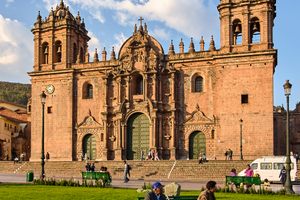About
Constructed in the middle of the 15th century, the Coricancha religious complex was the spiritual and metaphysical "center" of the Inca Empire -- the largest kingdom in pre-Columbian America, spanning modern-day Peru as well as parts of Ecuador, Argentina, Chile, Colombia, and Bolivia.
While the complex was dedicated to a litany of deities, Coricancha's most special sanctuary was reserved to honor the sun god Inti, the most central and revered figure in the Inca religion. Incas depicted Inti as a sun with human features, with sharp, outwardly flowing rays of sunshine framing his face. As such, Coricancha's Temple of the Sun was decorated with an elaborate array of gold artifacts and adornments, which the Incas believed to be Inti's sweat.
While it was primarily a place of worship, Coricancha served a number of political and scientific purposes as well, housing, for instance, two astronomical observation towers and serving as the burial site for deceased Inca rulers and their wives, who were mummified and whose remains would be periodically removed from the temple to be honored during important days in the Inca calendar.
The Inca Empire came to an end in 1572, exactly 40 years after the first battle between Spanish invaders and Inca warriors, when Spain finally conquered the last Inca stronghold. The Spaniards built a Christian monastery on the top of Coricancha, as they did with many native religious structures throughout South America, destroying much of the temple and melting down its unique, gold treasures. The monastery still stands on the site today.
Related Tags
Peru: Machu Picchu & the Last Incan Bridges
Discover Inca Wonders.
Book NowPublished
February 20, 2019


































